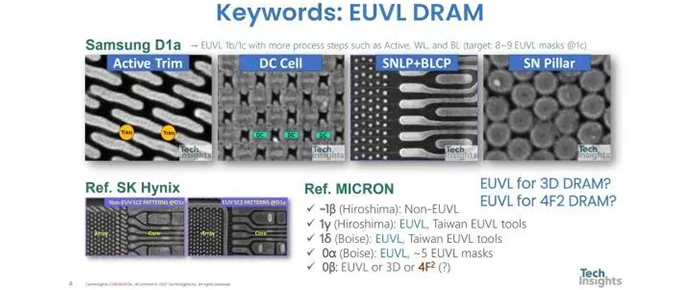IT Home reported on February 3 that according to a report by Korean media The Elec, DRAM memory giants Samsung and Micron will introduce more new technologies in the next memory generation, that is, the 1c nm process.
Note: The 1c nm generation is the sixth 10+ nm generation, which Micron also calls the 1γ nm process. The most advanced memory at the moment is the 1B nm generation, and Samsung calls its 1B nm a 12nm class process.
Choi Jeong-dong, senior vice president of analyst firm TechInsights, said at a recent workshop that Micron will be the first to introduce molybdenum (Mo, pronounced mù) and ruthenium (pronounced liǎo) at the 1c nm node. These two metals will be used as wiring materials for the lettering and bitlines of memory.
Molybdenum and ruthenium have lower resistance than tungsten (W), which is now used, further reducing the DRAM linewidth. However, ruthenium also has its own problems: it reacts in the process to form toxic ruthenium tetroxide (RuO4), which brings new problems to maintenance. Choi Jeong-dong believes that Samsung and SK hynix will introduce the two metals a little later by one to two generations.
Samsung, on its part, will further expand the use of the EUV process. Samsung was the first of the three major storage manufacturers to introduce EUV, and has applied it to layers such as character lines and bitlines, and it is expected that EUV applications will be expanded to 8-9 layers in 1c nm. In the case of Micron, EUV lithography will also be imported for the first time at the 1γ nm node.
Looking ahead to the future of sub-10nm processes, Choi Jeong-dong said that the three major manufacturers are all studying routes such as 3D DRAM and 4F2 DRAM to achieve further scaling, and X-DRAM proposed by Neo Semiconductor and 1T DRAM without capacitors are also possible directions.

